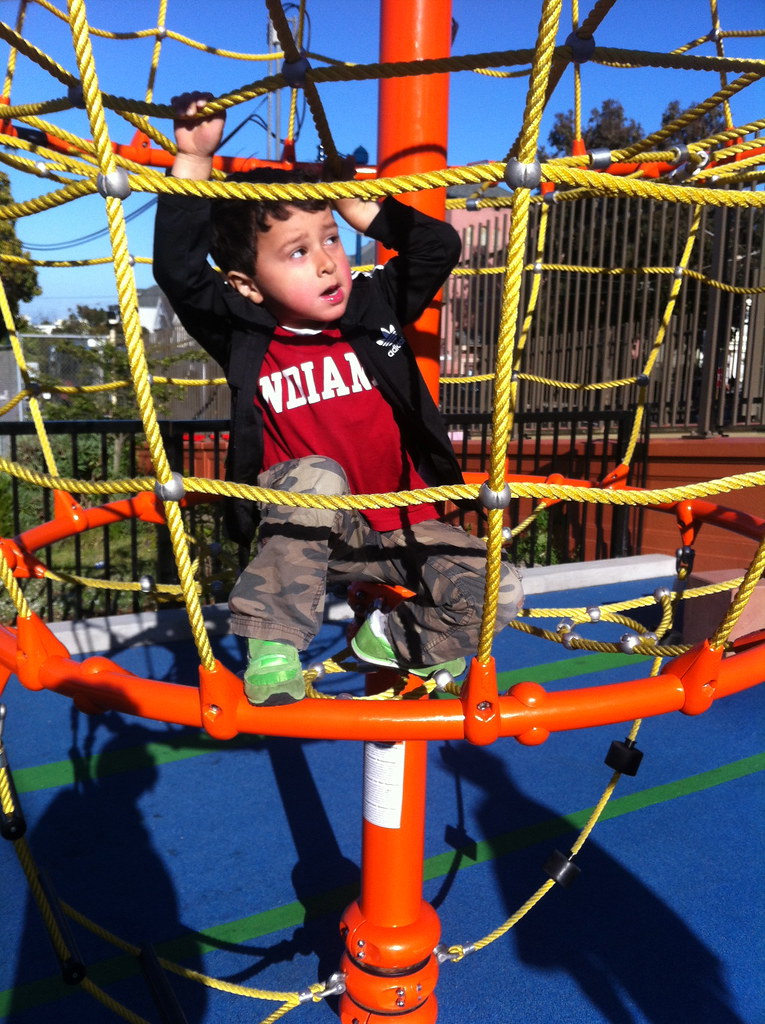The websites of many Sudbury Schools and Agile Learning Centers, they point out that there really is no "typical" day for students because every student is different and their days are different as well. To help paint a picture of Someday School, I have thought about how I imagine a typical day might look like for four hypothetical students. The students described here are composites of students I've taught in my special education classes over the years. I'm writing as I imagine how they might do if they were to be at our school.
 MAYLIE
MAYLIE
Maylie is a 10 year old girl who was attending a public school class for students with emotional and behavioral disorders. Maylie's behaviors have mostly included being disruptive and refusing to do school work. Her parents have been worried because Maylie seems so angry at school and seems to have no interest in anything... if given her choice, they think she'd probably just watch TV 24 hours a day. When asked what she is interested in, Maylie replies, "I don't know," and is unable to think of anything that excites her. Her parents are hoping that at Someday School she will find some sort of motivation for learning.
Here is a typical day for Maylie.
8:15 - Maylie arrives at school, and a facilitator tries to help her make a plan for the day. Maylie shrugs at everything and does not show any interest in any activities. The facilitator tells her to let him know if she thinks of anything she needs help with, and goes away to help another student who arrives. Maylie sits in a chair and does nothing.
9:15 - 10:00 - 6-year-old Savannah comes skipping into the room and asks Maylie to help her get some Strawberry Shortcake dolls from a shelf she cannot reach. Maylie helps her get the dolls, and Savannah then begs Maylie to play with her. Despite her bored and somewhat sour outward appearance, Maylie has a soft heart, and agrees to play dolls with Savannah. (Maylie is becoming more engaged in the world and is learning how it feels to help others.)
10:00 - 10:15 - Savannah asks Maylie to help her make a snack in the kitchen. While in the kitchen, they encounter Gavin. Maylie helps both of them follow directions to make a snack, and they all enjoy some "ants on a log" outside. (Maylie is continuing to become engaged in the world and learning about helping others.)
10:20 - 11:00 - Savannah asks Maylie to come with her to a class in which the younger kids learn alphabet sounds through music and movement. Maylie does not want to participate in the class but she agrees to sit in the back and watch. Afterwards, Amy, the facilitator leading the class, comments on how great Maylie seems to be with younger kids. Maylie mentions that she has several younger cousins that she likes to play with and help care for. Amy points out that the music and movement class is getting larger, and it might be helpful if Maylie is willing to come tomorrow and help out. Maylie agrees to think about it.
11:00 - 12:00 - Maylie tells Savannah she is feeling tired and needs a break. Savannah shows her the sensory room, where Maylie decides to rest in a bean bag chair for a while.
12:00 - 12:45 - Maylie goes to the kitchen to get her lunch, and sees the cooking class taking place. The food smells good,, and the students offer to share. They invite Maylie to participate in tomorrow's cooking class, because they'll be choosing what their next meal will be and planning a trip to the grocery store to buy ingredients. (If Maylie chooses to participate, she will be practicing reading skills, planning skills, social skills, money skills, and later all of the math and reading skills involved in cooking.)
12:45 - 2:45 - Maylie wanders around boredly and looks at what other people are doing. Everyone looks very busy with their own projects. Maylie notices that several facilitators say hi to her or stop to talk to her, but nobody tries to force her to participate in anything. Nobody gives her worksheets and tells her that she cannot do any other activities until she completes them. Nobody accuses her of not following rules.
2:45 - 3:15 - Still bored, Maylie looks at a chart of scheduled activities for tomorrow. She is beginning to understand that there is nothing she will be forced to do. She is also beginning to realize that sitting around doing nothing is not very pleasant. By the time the day is over, Maylie has decided she will definitely help out with the music and movement reading class, and that she might join the cooking class. She leaves school looking forward to the next day.
AMBER
Amber is an 11-year-old girl with autism. She loves to read and draw, and she loves animals. She was previously in a public school, where she attended a general education class and was pulled out for "Resource." Amber has been complaining to her parents that she is bored in school and doesn't have any friends. She also has not made much learning progress in the last 2 school years. She hated school and on some days tried to refuse to go, crying for an hour once she got there. Her parents have decided to let her try Someday School.
Here is a typical day for Amber.
8:30 - Amber arrives at school and makes a plan for what she wants to do today. She also picks a chore... she picks cleaning the guinea pig cage. Not many kids choose this job, but Amber loves animals and enjoys taking care of them.
8:45 - 9:45 - Amber does some water color painting in the art room. She is working on learning to paint pictures of horses. Her paintings have gotten pretty impressive and some of them are hanging around the school in frames. (Amber is getting the chance to express herself and is pursuing her talent.)
9:45 - 10:45 - Amber goes to a book circle that some of the girls have created for themselves with the help of one of the facilitators. They have chosen to read books with strong girl characters. They are in the middle of reading Out Of My Mind, a book about a girl with cerebral palsy who cannot speak, so many people assume she is not intelligent. However, the young character is actually extremely intelligent, and after she advocates for herself to get an augmentative communication device, she is able to show her teachers and peers what she is really capable of. Amber talks about how she can relate to the character, because sometimes she has trouble saying what she is thinking, and people have sometimes thought she wasn't smart or called her weird. (Amber is practicing reading comprehension skills and social skills.)
10:45 - 11:15 - Amber goes to the sensory area for a while and rests while listening to some calming music. (Some students need time to unwind after spending a lot of time with other people. It is a good idea to balance stimulating experiences with quiet time.)
11:15 - 12:30 - Amber and some other students participate in a cooking class taught by one of the facilitators. They previously planned out a meal, and today they are going to cook it and eat it. (Amber practiced reading comprehension skills and planning skills while planning the meal, and is also practicing social skills, team work, and important life skills.)
12:30 - 1:30 - Amber walks to the town library with some other students and a facilitator, and checks out a few books. When they get back, she spends some quiet time outside reading one of her books. (She's practicing reading skills and research skills.)
1:30 - 2:15 - Amber does her chore of cleaning the guinea pig cage. She also enjoys some time playing with and feeding the guinea pig. (She's practicing responsibility by caring for an animal.)
2:15 - 2:45 - Amber participates in a group that has spontaneously gathered to learn lattice multiplication from an older student. She struggled to learn multiplication in her old school. Lattice multiplication seems like a neat trick to her, and she is able to learn it fairly quickly. (She is learning and practicing math skills.)
2:45 - 3:15 - Amber spends the rest of her time in the sensory area listening to some quiet music and playing with clay, until it is time to go home.
GAVIN
Here is a typical day for Gavin.
8:30 - Gavin arrives in the morning. One of the learning facilitators helps him to plan what he would like to do today. He also chooses a chore from the chore board... he chooses to help care for the garden.
8:45 to 10:00- Gavin plays soccer outside with a group of kids of all ages. (Playing soccer is helping him channel his boundless energy, and is also helping him to learn social skills and team work skills.)
10:00 to 10:15 - Gavin goes inside to have a snack. He makes it himself by following a recipe in a book of easy, no-cook snacks for kids to make. An older student helps him by reading the directions aloud to him. (Gavin is practicing reading, following directions, and responsibility for himself.)
10:20 to 11:00 - Gavin participates in a class facilitated by Amy, where students are learning alphabet sounds using music and movement. (Gavin is learning alphabet sounds and reading skills in a very kinesthetic way, which is perfect for his learning style.)
11:10 - 12:00 - Gavin goes outside to help care for the garden. He pulls weeds, and waters plants. He also is in charge of measuring some of the plants and charting how much they have grown since last week. (He's doing math by measuring and graphing, science by learning about the life cycle of plants, and responsibility by helping to care for something.)
12:00 - 12:30 - Gavin and some friends work on building a fort outside. One of the facilitators, Jake, helped them draw up plans for the fort last week, and this week he has been helping them learn how to use some tools. (He's learning social skills, following directions, life skills, and responsibility.)
12:30 to 1:00 - Gavin eats his lunch outside.
1:00 - 1:45 - Gavin participates in a Karate class led by a 12-year-old student who is a Blue Belt. (He's learning self-control and also helping channel more of his boundless energy.)
1:45 -2:15 - Gavin has set a goal for himself of memorizing and being able to recite Martin Luther King Jr's "I have a dream" speech for the school's talent show. Grace, a facilitator, is helping him by reading the speech aloud for him as he reads along, and listening to him as he memorizes it line by line. (He's practicing reading skills, while also learning about US History, and learning how to set and reach his goals.)
2:15 -3:15 - One of the facilitators is helping some students to do a science experiment involving Mentos and diet soda. First they've made some predictions about what they think will happen, and then they carry out the experiment. Finally, they do some reading to find out why the experiment resulted in an amazing soda geyser. Afterwards, Gavin asks the facilitator to help him write down the steps of the experiment so that he can try it again at home. (He's practicing reading skills, writing skills, science, and following directions.)
3:15 - School is finished! Gavin goes home happy and tired, looking forward to more learning the next day.


No comments:
Post a Comment
Share something with the group!